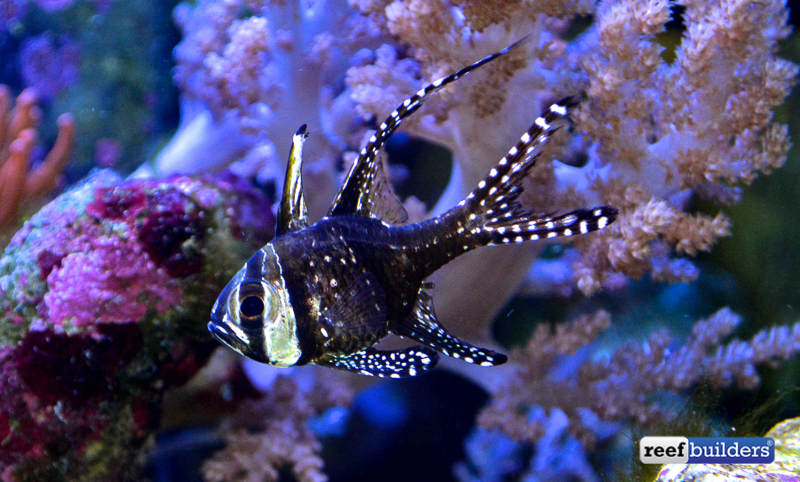It’s been almost three years since we first reported about the the Panda Banggai cardinalfish mutation, and we’ve heard nary a peep more about this exciting fish. The Panda Banggai is the first domesticated marine fish strain to show up outside of the massive number of designer clownfish available to the aquarium hobby. Thankfully, ardent fish breeder Tom Verhoeven got in touch with us to let us know that he is working with the strain and he’s got the pictures to prove it.

Just to recap, we first came across the exciting half-black strain of Pterapogon kauderni in Germany for InterZoo 2012 where several specimens were on display at the Tropical Marine Centre booth. We learned then that a huge Banggai Cardinalfish breeding farm in Thailand was raising these fish by the hundreds of thousands, and near-singlehandedly taking a lot of the pressure away from wild collected fish.
Among these huge crops of captive bred Banggai cardinalfish you would invariably expect to find some degree of variation, and indeed that’s where the first Panda Banggais were found. These first partially melanistic P. kauderni were raved about, talked about, photographed and then they seemed to have faded away to obscurity. We knew in our salty heart that this stain would make a comeback, in some way or another, and thankfully Mr. Verhoeven made our day by sending us some new information that someone after our own desires is currently working with this interesting cardinalfish mutation.

In contrast to the “original” Panda Cardinalfish strain, the specimens in Tom Verhoeven’s stables stem from one original founding stud he got as a wild caught specimen, which eventually developed an overall black body coloration. The fish became darker and darker with age and has reached a breeding age and already produced offspring.
Interestingly, the offspring from this black panther Banggai cardinalfish are completely white as juveniles, but turn to black as they get older. This trait is not present in all specimens, but seems to appear in about 25% of the first generation. The first specimen is still a young male and produces small batches of offspring (around 20) and Tom hopes to produce more of them in the future.

The offspring are growing and he’s planning on back-crossing them to see if the fish can breed true, that is of course if it’s a mutation. There is also a possibility that this darkness is due to some environmental factors, but we hold out hope that it’s genetic because not all specimens have this rare coloration.
We’ve observed plenty of large adult banggai cardinalfish get darker with age, but these are very large mature fish, who’s overall coloration is darker and duller, with even the white spots faded, probably due mostly to old age and/or UV exposure. By comparison, Tom’s Panda Banggai cardinalfish do not have quite the same degree of stark half black coloration.
But since the white spots are holding true and still well pronounced, we are holding out hope that in the future this trait can be developed into the hypothetical gem-tang banggai cardinalfish, with an all black body punctuated by few lines and lots of beautiful, starry night bright spots. Big thanks to Tom for this update and we’ll be sure to let you know if his or other breeders succeed in developing and offering any domestications of Pterapogon.

https://pictures.lytro.com/ReefBuilders/pictures/473543



